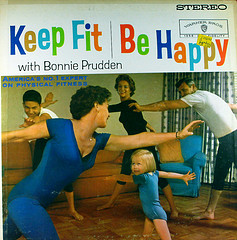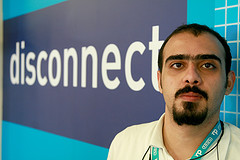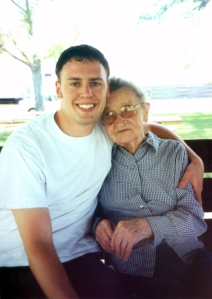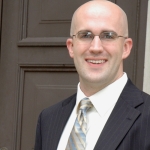 I just achieved the milestone of collecting 500 followers on Twitter. Not really sure what this means, but I’m certainly impressed with myself. Apparently either this many people are interested in seeing my daily collection of random quotations, observations, and links to someone else’s hard work and good thinking, or I have attracted a herd of Multi-Level Marketing scammers. Either way, I was just a tad puffed up at my new-found “popularity”.
I just achieved the milestone of collecting 500 followers on Twitter. Not really sure what this means, but I’m certainly impressed with myself. Apparently either this many people are interested in seeing my daily collection of random quotations, observations, and links to someone else’s hard work and good thinking, or I have attracted a herd of Multi-Level Marketing scammers. Either way, I was just a tad puffed up at my new-found “popularity”.
I know getting more and more connections is important because people offer me “sure-fire” ways to accomplish it. I regularly receive offers to share the “secret” of how to achieve follower levels in the forty thousand-plus range. I also regularly receive requests to follow someone else to help them reach some arbitrary number of people following their every electronic musing on some networking site. Apparently this will make them happy.
After all, Ashton Kutcher and Ellen DeGeneris have more Twitter followers than the combined populations of several countries (Ireland, Panama, and Norway, if you’re interested) (source: “Socionomics” blog). If piling up numbers is good enough for them, isn’t it good enough for me?
Facebook.com has a similar thing going with numbers of “friends”, enhanced by the ease of connecting on this gigantic social networking site. Little effort is involved in racking up a respectable list of 200 or more friends.
Even the primay business networking site, LinkedIn.com, supposedly more serious and results oriented, includes a great number of folks that proudly proclaim their status as “LIONs” (Linked In Open Networkers) with thousands of links to other people. They achieve this by accepting any invitations to connect from anyone who asks. I have linked to a number of LIONs and had no meaningful contact with them after connecting, which left me feeling a little like high![MPj04331250000[1] MPj04331250000[1]](https://disciplesworld.files.wordpress.com/2009/11/mpj043312500001.jpg?w=200&h=300) school, when I thought I had a friendship with one of the cool kids, only to find out differently in a very hurtful way. While some LIONs actively “work” their large networks, many apparently are just engaging in a game for bragging rights.
school, when I thought I had a friendship with one of the cool kids, only to find out differently in a very hurtful way. While some LIONs actively “work” their large networks, many apparently are just engaging in a game for bragging rights.
So, when does the idea of “enough is enough” kick in here?
I have enough trouble just keeping up with everyone in my nuclear family, which includes my wife and brother, four children, three lovely spouses, and five spectacularly perfect grandchildren, let alone all my online connections.
Well, according to a study by Robin Dunbar, a maximum number for effective relationships does exist and that number is 150.
Mentioned in The Tipping Point , this concept has been applied to military units, employee group sizes, and even church congregations. Maybe this is why so many Disciples congregations of my acquaintance seem to hover around this number.
Tobias Escher expands on this fascinating theory, stating that “. . . to put it simply: Your brain can just deal with about 150 meaningful relationships.” Meaningful relationships are those with people who you trust, can go to in times of distress, and who occupy a specific position in our social network. So we can have those other relationships, but there does appear to be an upper limit on those which really count.
This whole discussion brings up some interesting questions about our use of social media.
Why am I doing this? Am I connecting with others online for bragging rights or am I interested in more meaningful connections?
Do I really need accounts and profiles on all these networking sites or is it time to focus? Is the time I spend on The Intersection more valuable than other sites (the answer is “yes” to this question:).
 Have I identified my true Circle of Influence? Not those I can sell something to, but those who I would contact if I needed help. Many people are struggling with employment issues these days. How many of those 500 followers on Twitter would I feel comfortable sending an IM that I need some gigs to make the rent next month?
Have I identified my true Circle of Influence? Not those I can sell something to, but those who I would contact if I needed help. Many people are struggling with employment issues these days. How many of those 500 followers on Twitter would I feel comfortable sending an IM that I need some gigs to make the rent next month?
Am I spending enough time nurturing those relationships that really matter, both online and face-to-face, or am I just lost in a blur of online living? I may be able to handle more than 150, but when do the numbers get in the way of what I am trying to do?
After all, Jesus only had 12 primary connections and look at what he was able to do.
. . . . Just some things to consider as we all develop our social networking strategies on this crisp and beautiful fall day here in the heartland.
John
John E. Smith lives in Maryland Heights, Missouri and is a member of Webster Groves Christian Church. He blogs at both A Matter of Strategy and The Strategic Learner. You can follow his tweets as @Stratlearner on Twitter.

 Back in 2003, researchers Nicholas Christakis and James Fowler began an extensive review of the Framingham Heart Study – but they weren’t looking at vital statistics and cholesterol numbers. Instead, they looked at subjects’ social networks.
Back in 2003, researchers Nicholas Christakis and James Fowler began an extensive review of the Framingham Heart Study – but they weren’t looking at vital statistics and cholesterol numbers. Instead, they looked at subjects’ social networks.



 I get a lot of questions about how churches can use social media. Almost 100% of the time, the person basically wants to be taught a new technique that will help them use a tool like Facebook to attract new people to their church. Generally, I bristle a bit at the idea that social media’s usefulness for churches is all about attraction. Thus, I tend to not give out many how-to’s. Instead, I try to focus on getting churches to re-engage with their story and help them use things like social media to tell that story. However, I have a simple idea that I want to share in hopes that some church will give it a try and let me know how it goes.
I get a lot of questions about how churches can use social media. Almost 100% of the time, the person basically wants to be taught a new technique that will help them use a tool like Facebook to attract new people to their church. Generally, I bristle a bit at the idea that social media’s usefulness for churches is all about attraction. Thus, I tend to not give out many how-to’s. Instead, I try to focus on getting churches to re-engage with their story and help them use things like social media to tell that story. However, I have a simple idea that I want to share in hopes that some church will give it a try and let me know how it goes.


Recent Comments